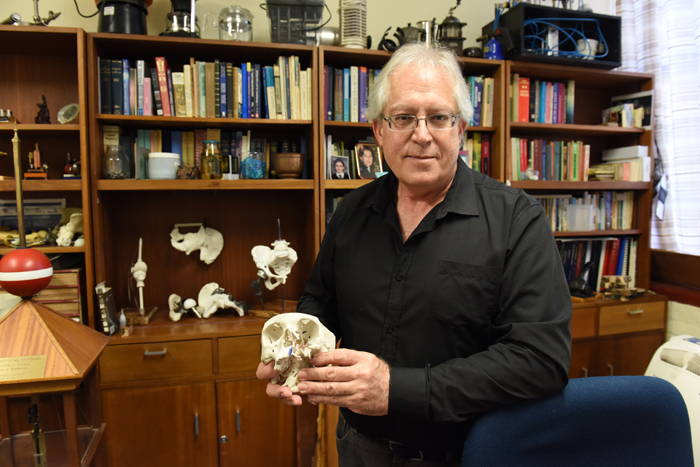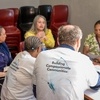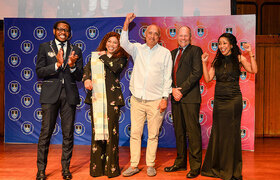George Vicatos: Where engineering and anatomy meet
14 October 2016 | Story Ambre Nicolson. Photo Michael Hammond.
For a long time Associate Professor George Vicatos felt that he was missing some piece of knowledge that rendered his relatively vast education incomplete.
His mother was a medical doctor in Athens, where he grew up. He would entertain patients in her surgery and study her anatomy textbooks even before he could read the words on the pages. When it came time to pick a course of study, however, George Vicatos chose engineering.
“When I finished my first three years of engineering in the UK, I felt my education was incomplete and so I decided to switch to maritime engineering. It meant I had to catch up on all the second- and third-year naval architecture courses, but I managed it. But it still felt like there was a piece missing,” Vicatos says.
In 1980 he went on to obtain a master's degree in aeronautics from Imperial College London. He then landed a job with a Greek–English shipping company, which allowed him to travel the world and work on their fleet of tankers. But after a couple of years he grew bored, so he returned to Athens to complete his compulsory military training.
At this point, two things happened: Vicatos met his future wife, who was South African, and the global shipping industry went into a steep decline. He was disillusioned when a job building supertankers in Japan fell through, so he decided to take up an academic position at UCT instead.
Anatomy of an inventor
In 1995 he completed his PhD in thermodynamics on absorption refrigeration, but he still felt that something was lacking.
“So I decided to return to what was really my first love: anatomy,” he explains.
He spent a year studying anatomy at UCT among students who were half his age. Where they immersed themselves in the structure of the soft tissues of the body, Vicatos focused more on the function of the human skeleton, seeing it with the eyes of an engineer.
“I knew then that I had found the missing piece,” he says, “It was like suddenly the lights were switched on and all the doors opened. My education was complete.”
Vicatos' first opportunity to apply his new knowledge came in the form of a young man who required a knee replacement due to a bone tumour. Without an adequate replacement, his leg would have to be amputated. Vicatos rose to the challenge and designed a new kind of implant. The surgery was a success and the patient retained complete use of his leg.
Vicatos formed a company with another engineer and a doctor and began to design and produce a number of titanium implants. By the time the same young man returned for treatment three years later, having sustained a work-related injury, Vicatos had created an implant that could replace his entire femur.
“By that point, I had already created a modular system of implants which meant I had created 85% of the human skeleton in titanium.”
“By that point, I had already created a modular system of implants, which meant I had created 85% of the human skeleton in titanium,” Vicatos says.
By then he had already been awarded three South African patents: for a Trochanteric Fixation tool and implants, which are used in total hip replacement surgery; for a Stem-centralisation Femoral Implant; and for a Total Proximal Femoral Prosthesis. For the latter, Vicatos also received the 2003 Innovation Fund Award.
Working together
The original company did not survive, but in 2013 Vicatos created a new company that started manufacturing implants to ultra-precise specifications. In the interim, he also worked on some revolutionary devices. One such invention, which he built in conjunction with UCT's Samuel Ginsberg, is a femur implant for children that expands as the child grows.
Vicatos has also had great success in the field of maxillofacial reconstructive surgery. He created an implant 'track' device with maxillofacial surgeon Dr Rushdi Hendricks that helps survivors of partial maxillectomies (removal of all or part of the upper jaw) to regenerate their own jawbones and the soft tissues of their palates. To date he has successfully completed this process with six patients.
In the future, Vicatos hopes to continue to create a wider range of components, all of which will be produced locally.
“Being able to personalise the implants and work with the physician involved is incredibly important and, not surprisingly, surgeons much prefer having someone on hand who can work with them to create the best possible outcome for the patient.”
 This work is licensed under a Creative Commons Attribution-NoDerivatives 4.0 International License.
This work is licensed under a Creative Commons Attribution-NoDerivatives 4.0 International License.
Please view the republishing articles page for more information.










